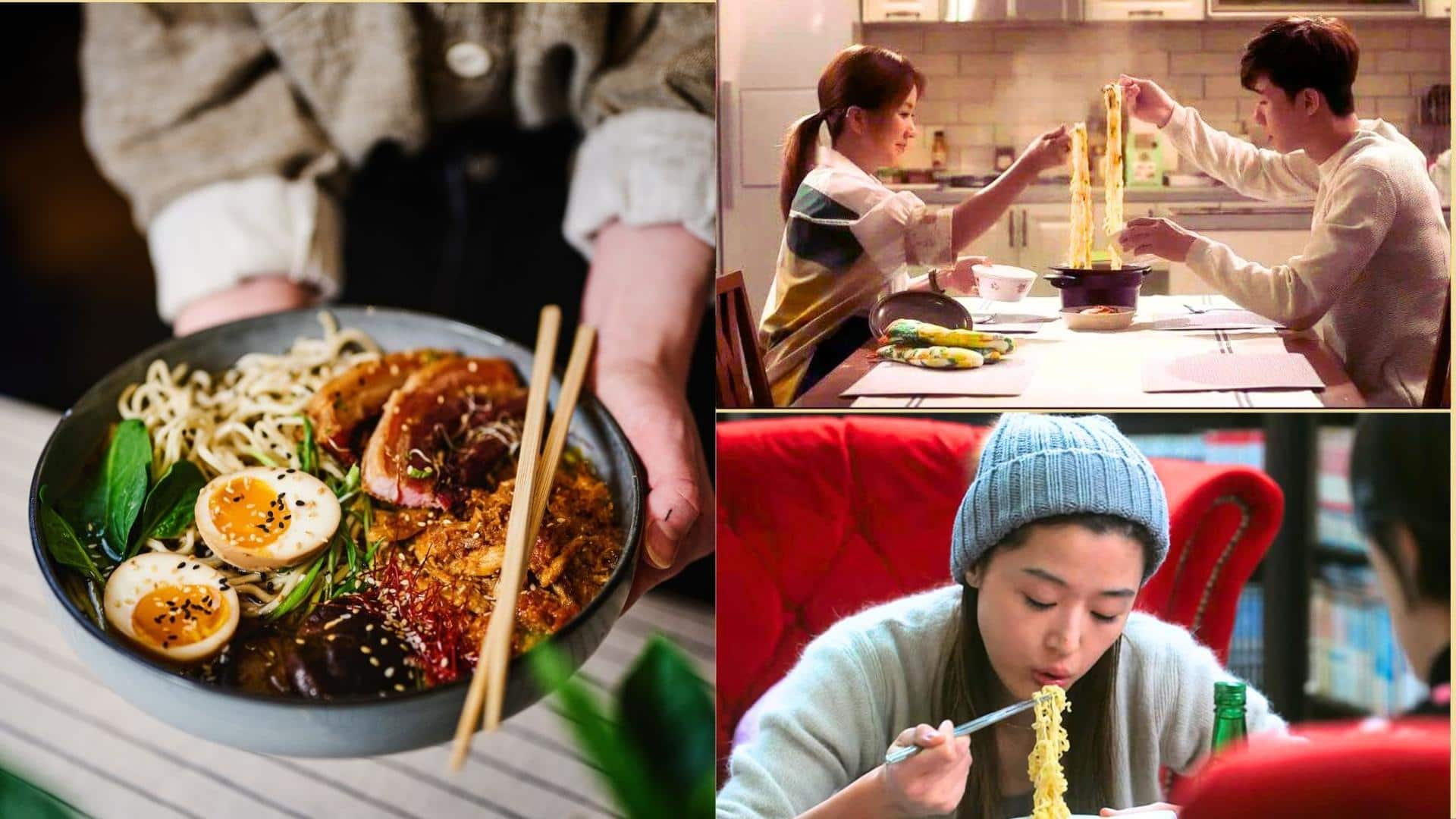
#NewsBytesExplainer: Decoding how Korean dramas sparked global ramyeon obsession
What's the story
K-dramas have captivated audiences worldwide with their storytelling and deep passion for cuisine, particularly the beloved Korean noodle dish ramyeon. With shows like Dinner Mate—where two strangers meet on dinner dates—ramyeon has emerged as a cultural phenomenon, and its undeniable appearances on screen have enticed our senses. Here, we uncover how K-dramas have ignited a global ramyeon obsession that shows no signs of waning.
Context
Why does this story matter?
Whether it is a cultural tradition or a strategic move to globalize Korean cuisine, fans have admitted that they cannot watch Korean shows without gorging on Korean food. In 2020—with the rise of the Hallyu wave—Flipkart's statistics revealed a 1.5 times increase in demand for popular Korean dishes. The numbers speak for themselves, emphasizing the growing popularity and influence of Korean food in India.
History
Before going ahead, here's basic history of ramyeon
The history of ramyeon dates back to 1963—a time when it served as an affordable food in the aftermath of the Korean War. Samyang Food played a significant role in introducing their renowned Samyang ramyeon, utilizing Japan's mechanical equipment and kickstarting the trend of red and spicy soup. However, as people grew tired of the traditional ramyeon, new fusion varieties emerged in the 2000s.
Symbolism
Ramyeon has prominent symbolism attached to it
The dish kong guksu—consisting of wheat noodles in cold soybean soup—is known as the "monastic smile." This rare treat is said to make a monk smile. In Korean culture, long noodles symbolize longevity and lasting marriage. Therefore, they are traditionally consumed during birthdays and special occasions like hwangap, a significant celebration held on one's 60th birthday (or 61st, according to the Korean numbering system).
Transition
Did you know, ramyeon serves as best pickup line?
Believe it or not, the phrase "Do you want to eat ramyeon?" from What's Wrong with Secretary Kim (2018) carries a similar connotation to the popular phrase "Netflix and chill," as it carries a euphemism for casual encounters. The use of this sexual innuendo was first introduced in the 2001 film One Fine Spring Day and has since made its way into many K-dramas.
Global frenzy
Ramyeon mania: Popular shows that ignited worldwide noodle trend
If you're an avid K-drama fan, you may appreciate the significance of ramyeon in building relationships. Let's recall Reply 1997, the 2012 prequel to the series, Reply 1988. One unforgettable scene in the show features Jung Eun-ji (Sung Shi-won) cooking ramyeon with the drama's second lead, Seon In-Guk. The act of preparing and sharing ramyeon symbolizes that they find comfort in each other's presence.
Significance
Academy Award-winning film 'Parasite' also has special ramyeon significance
The Academy Award-winning film Parasite (2019) may not be a lighthearted drama, but it deserves mention here for its ramyeon significance. In one of the scenes, the Kim family returns home and craves ramyeon. However, their version of "regular" ramyeon is prepared with "expensive steak." Director Bong Joon-ho masterfully gave a powerful commentary on the stark class differences through a bowl of ramyeon.
Pop influence
Want ramyeon recipe? BTS's Jungkook has one for you!
K-pop sensation BTS has also made a significant impact on the popularity of ramyeon worldwide. In April, BTS member Jungkook shared his special ramyeon recipe, which quickly went viral on the internet. It's worth noting that Jungkook is not the only BTS member who has expressed their love for ramyeon; the group has even included a recipe for ramyeon in their BTS cookbook too.